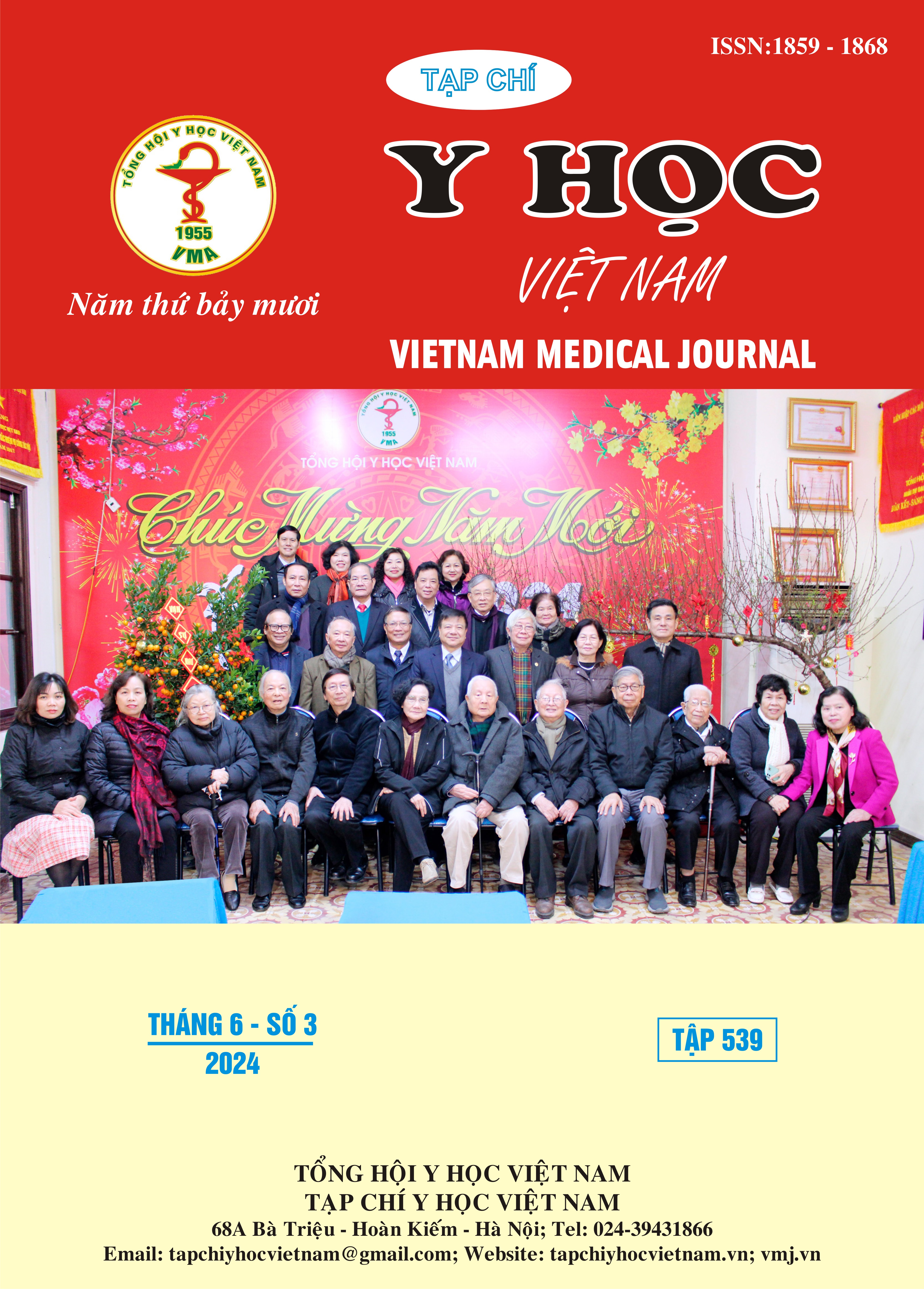CHỈNH HÌNH PHỨC HỢP HÀM GÒ MÁ QUA ĐƯỜNG MI MẮT TRÊN: BÁO CÁO CA LÂM SÀNG
Nội dung chính của bài viết
Tóm tắt
Đặt vấn đề: Hiện nay có nhiều cách thức tiếp cận và điều trị gãy phức hợp hàm gò má có chỉ định phẫu thuật. Lựa chọn phương thức điều trị thích hợp tuỳ vào từng trường hợp tổn thương cụ thể. Ca lâm sàng: Bệnh nhân nữ, 55 tuổi, chấn thương vùng đầu mặt phải do tai nạn giao thông, được chẩn đoán gãy phức hợp hàm gò má phân loại II-B-R theo Ozyazgan (2007) [1]. Khi tình trạng bệnh nhân ổn định, tiến hành nắn chỉnh, kết hợp phần xương gãy cùng lúc với phẫu thuật chỉnh hình mi mắt trên theo nhu cầu thẩm mỹ của bệnh nhân. Phẫu thuật đạt kết quả tốt về mặt chức năng và thẩm mỹ, bệnh nhân hài lòng với kết quả phẫu thuật. Bàn luận: Có nhiều cách phân loại tổn thương và tiếp cận điều trị gãy phức hợp hàm gò má. Phẫu thuật viên cần nhận định được chính xác tổn thương và có thể phối hợp nhiều đường tiếp cận để đạt được sự chính xác cao nhất khi điều chỉnh lại các tổn thương. Trên ca bệnh này, phẫu thuật chỉnh hình mi mắt trên cùng lúc với nắn chỉnh các ổ gãy tương ứng được xem là phù hợp nhất. Kết luận: Gãy phức hợp hàm gò má là chấn thương vùng hàm mặt thường gặp. Lựa chọn cách thức điều trị cần được cá thể hoá tuỳ theo loại tổn thương và nhu cầu bệnh nhân để đạt được hiệu quả cao cả về mặt chức năng và thẩm mỹ.
Chi tiết bài viết
Từ khóa
Gãy phức hợp hàm gò má, khớp trán gò má, chấn thương hàm mặt
Tài liệu tham khảo
2. Starch-Jensen, T., L.B. Linnebjerg, and J.D. Jensen, Treatment of Zygomatic Complex Fractures with Surgical or Nonsurgical Intervention: A Retrospective Study. Open Dent J, 2018. 12: p. 377-387.
3. Farber, S.J., et al., Current Management of Zygomaticomaxillary Complex Fractures: A Multidisciplinary Survey and Literature Review. Craniomaxillofac Trauma Reconstr, 2016. 9(4): p. 313-322.
4. Ji, S.Y., et al., Surgical Methods of Zygomaticomaxillary Complex Fracture. Arch Craniofac Surg, 2016. 17(4): p. 206-210.
5. Dũng, V.A., Nghiên cứu đặc điểm lâm sàng và hiệu quả điều trị gãy phức hợp gò má - cung tiếp có thoát vị tổ chức quanh nhãn cầu vào xoang hàm. 2020, Trường đại học Y Hà Nội.
6. Marinho, R.O. and B. Freire-Maia, Management of fractures of the zygomaticomaxillary complex. Oral Maxillofac Surg Clin North Am, 2013. 25(4): p. 617-36.
7. Zhang, X., et al., Surgical navigation improves reductions accuracy of unilateral complicated zygomaticomaxillary complex fractures: a randomized controlled trial. Sci Rep, 2018. 8(1): p. 6890.
8. Pohlenz, P., et al., Intraoperative cone-beam computed tomography in oral and maxillofacial surgery using a C-arm prototype: first clinical experiences after treatment of zygomaticomaxillary complex fractures. J Oral Maxillofac Surg, 2009. 67(3): p. 515-21.


